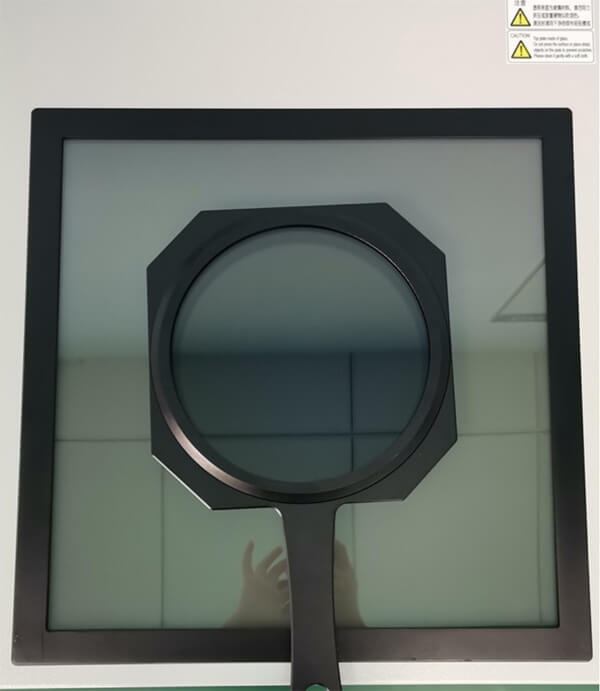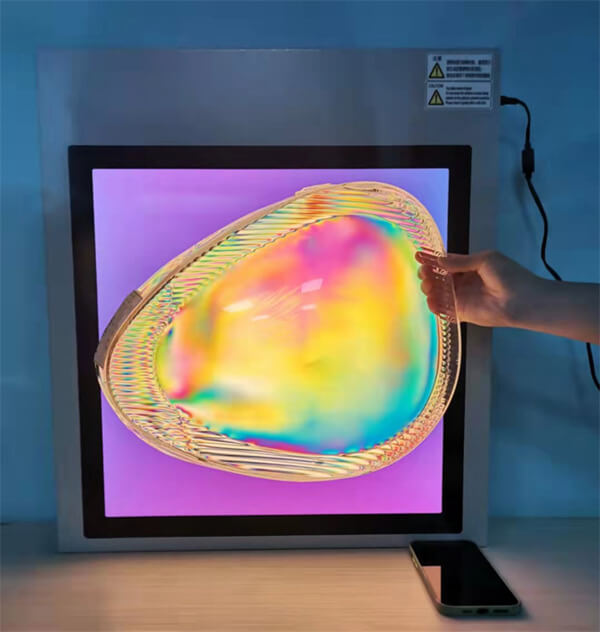Lots of customers use our polariscope to detect the internal stress of PC plastic products which occur during the production, such as sunglasses, windshields, eye masks, etc. With the presence of residual stress, product deformation, astigmatism, poor transparency and cracking are often found. The reasons for internal stress are shown below:
The internal stress of PC products is mainly caused by orientation stress and temperature stress, and sometimes also related to improper demoulding. After the macromolecules inside the injection molded products orients, internal stress is likely to occur, resulting in stress concentration. During injection molding, the melt is rapidly cooled, and the viscosity of the melt is higher at a lower temperature, and the oriented molecules cannot be fully relaxed. The internal stress generated in this way has an impact on the mechanical properties and dimensional stability of the product. Therefore, the melt temperature has the greatest influence on the orientation stress. When the melt temperature is increased, the melt viscosity decreases. So the shear stress and orientation decrease. In addition, the degree of relaxation of the orientation stress is greater at high melt temperatures. But when the viscosity decreases, the pressure transmitted by the injection molding machine screw to the mold cavity increases, which may increase the shear rate and cause the orientation stress to increase. If the holding time is too long, the orientation stress will increase. Increasing the injection pressure will also cause an rise in the orientation stress due to the climbed shear stress and shear rate. The thickness of the product also affects the internal stress. The orientation stress shrinks with the increasing thickness of the product. Because the thick-walled product cools slowly, the melt cools and relaxes in the cavity for a long time, and the oriented molecules have sufficient time to return to a random state. If the mold temperature is high, the melt will cool slowly, which can reduce the orientation stress.
Temperature-stressed plastics have a large temperature difference between the melt temperature and the mold temperature during injection molding, which makes the melt near the mold wall cool more quickly, resulting in uneven stress distribution in the product volume. Due to the large specific heat capacity and low thermal conductivity of PC, the surface layer of the product cools much faster than the inner layer. The solidified shell layer formed on the surface of the product will hinder the free shrinkage of the interior when it continues to cool. As a result, the product will generate tensile stress inside the product. Meanwhile , the surface layer generates compressive stress. The greater the stress generated by the shrinkage of the thermoplastic, the lower the stress generated by the compaction of the material in the mold. That is, the holding time is short and the holding pressure is low, which can greatly reduce the internal stress.
The shape and size of the product also have a great influence on the internal stress. The greater the ratio of the surface area to the volume of the product, the faster the surface cooling, and the greater the orientation stress and temperature stress. The orientation stress is mainly generated in the thin surface layer of the product. Therefore, it can be considered that the orientation stress should increase as the ratio of the surface of the product to its volume increases. If the thickness of the product is uneven or the product has metal inserts, it is easy to produce orientation stress. So the inserts and gates should be set at the thick wall of the product. From the above analysis, it can be seen that due to the structural characteristics of the plastic and the limitation of the injection molding process conditions, it is impossible to completely avoid the internal stress. However , there are many methods to reduce the internal stress or to make the internal stress evenly distributed in the product. In order to check whether a PC part, has even residual stress distribution , a Handheld Polariscope will be a handy equipment. It enables to observe stress distribution in transparent molding parts in real time.

